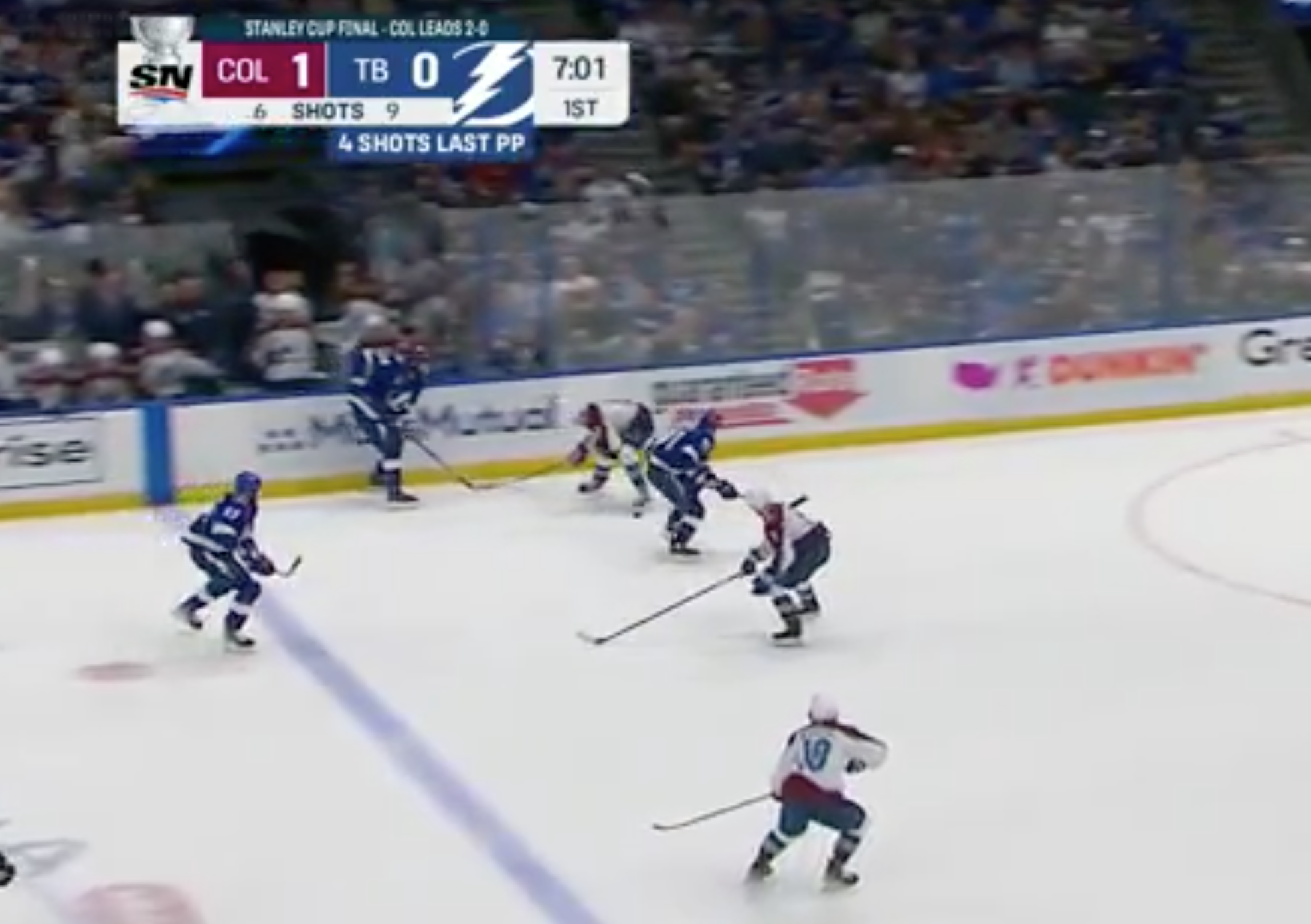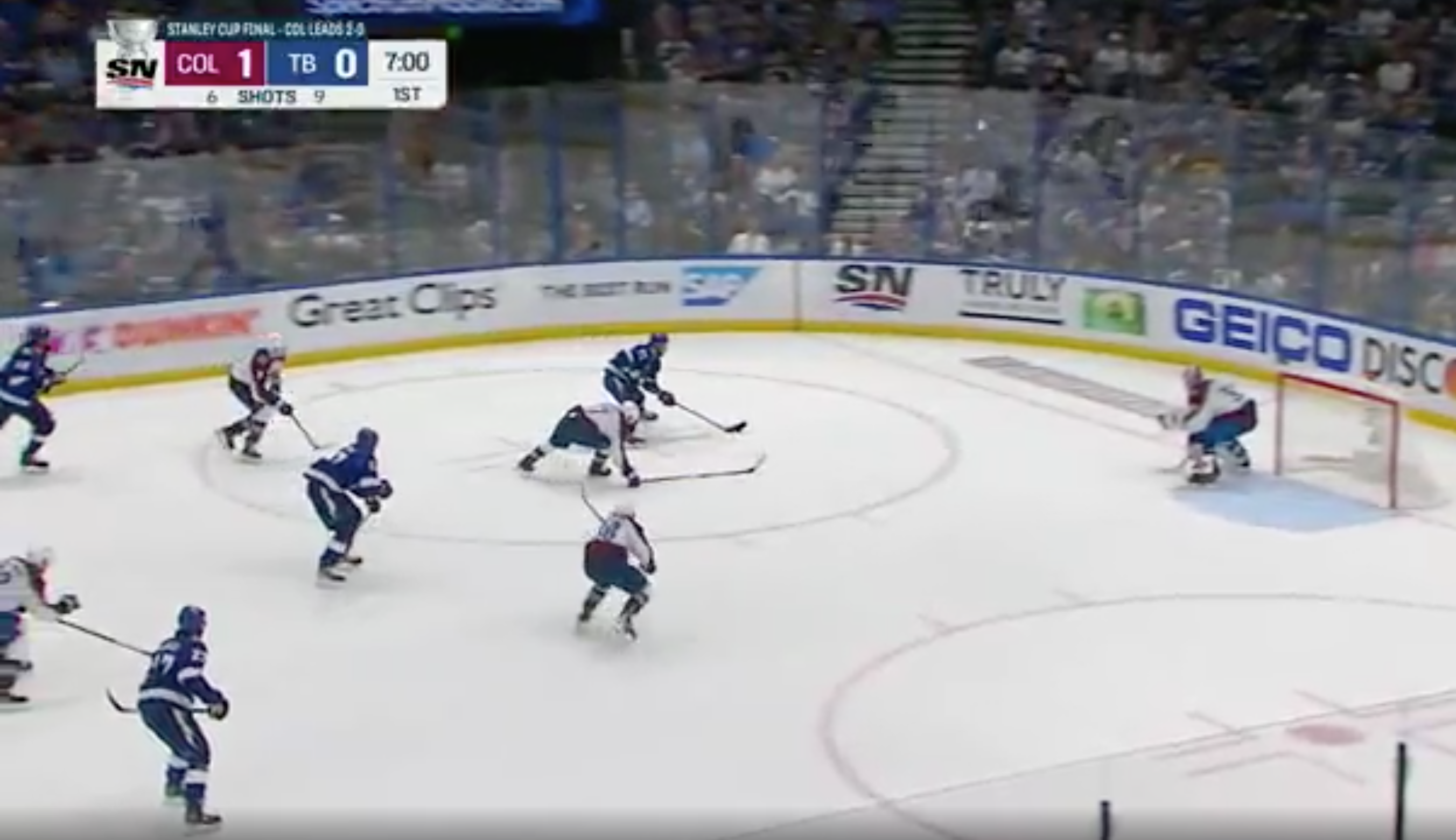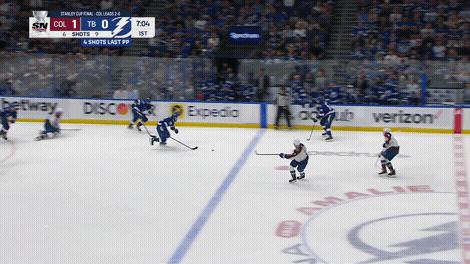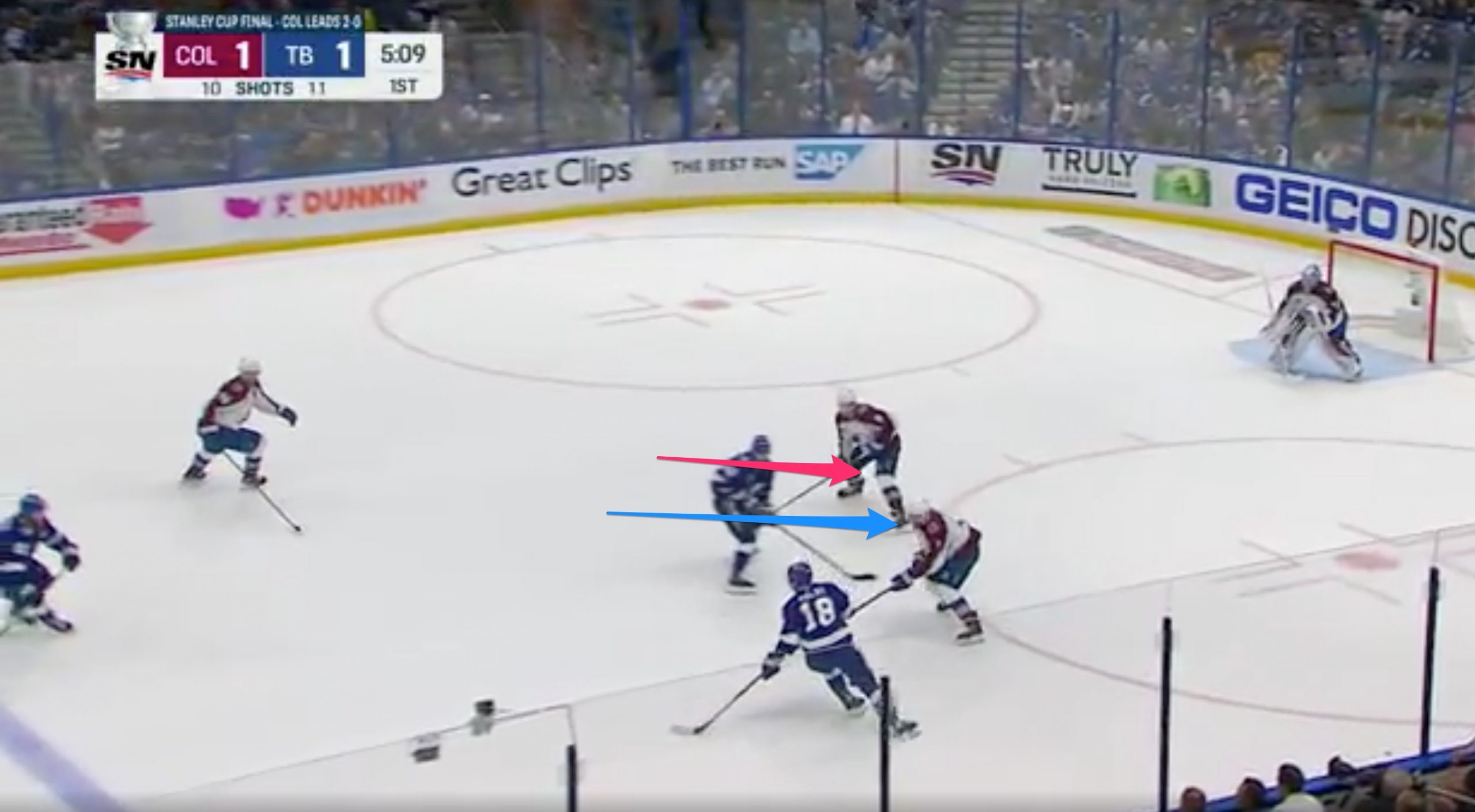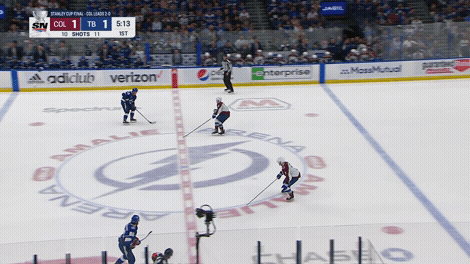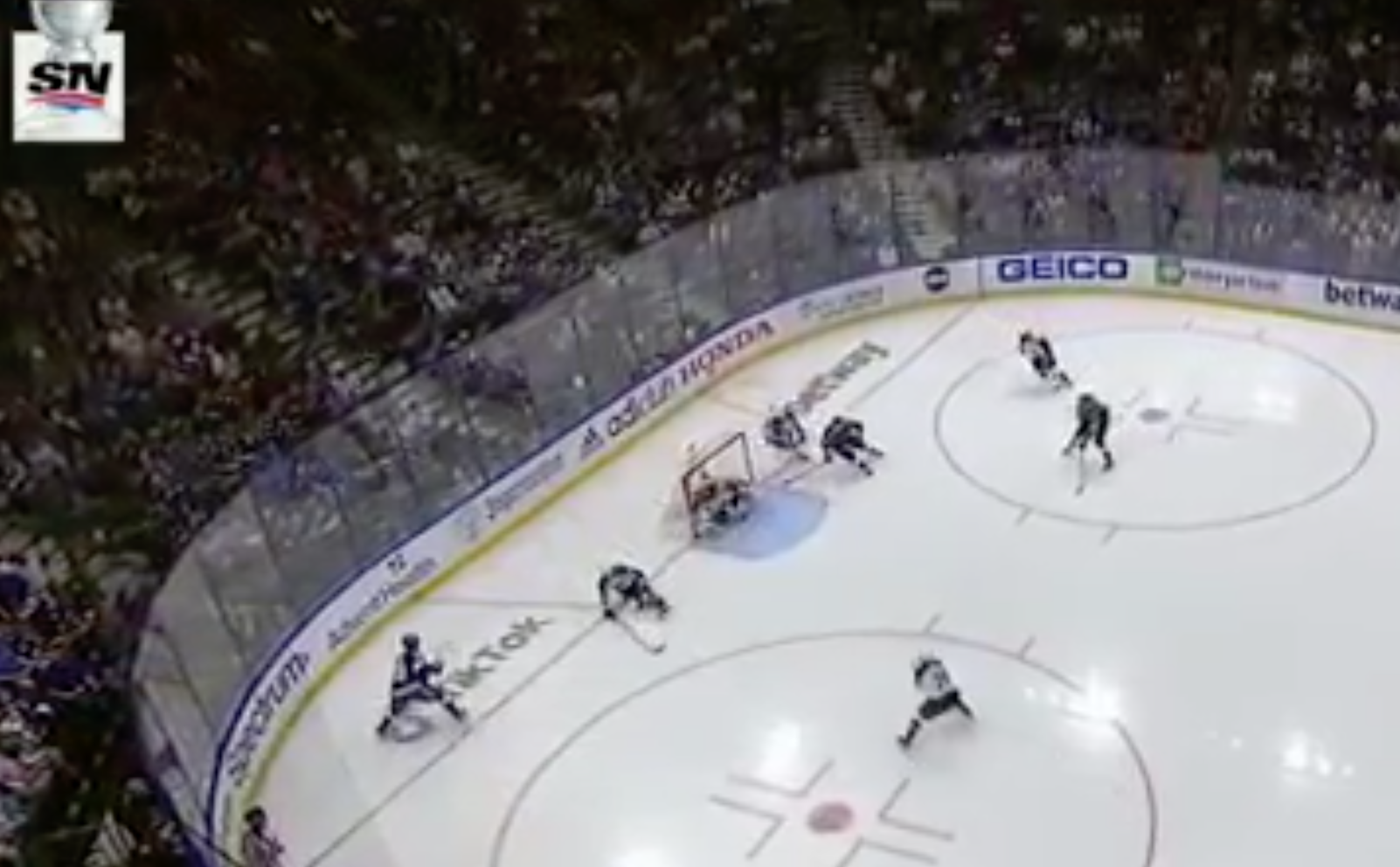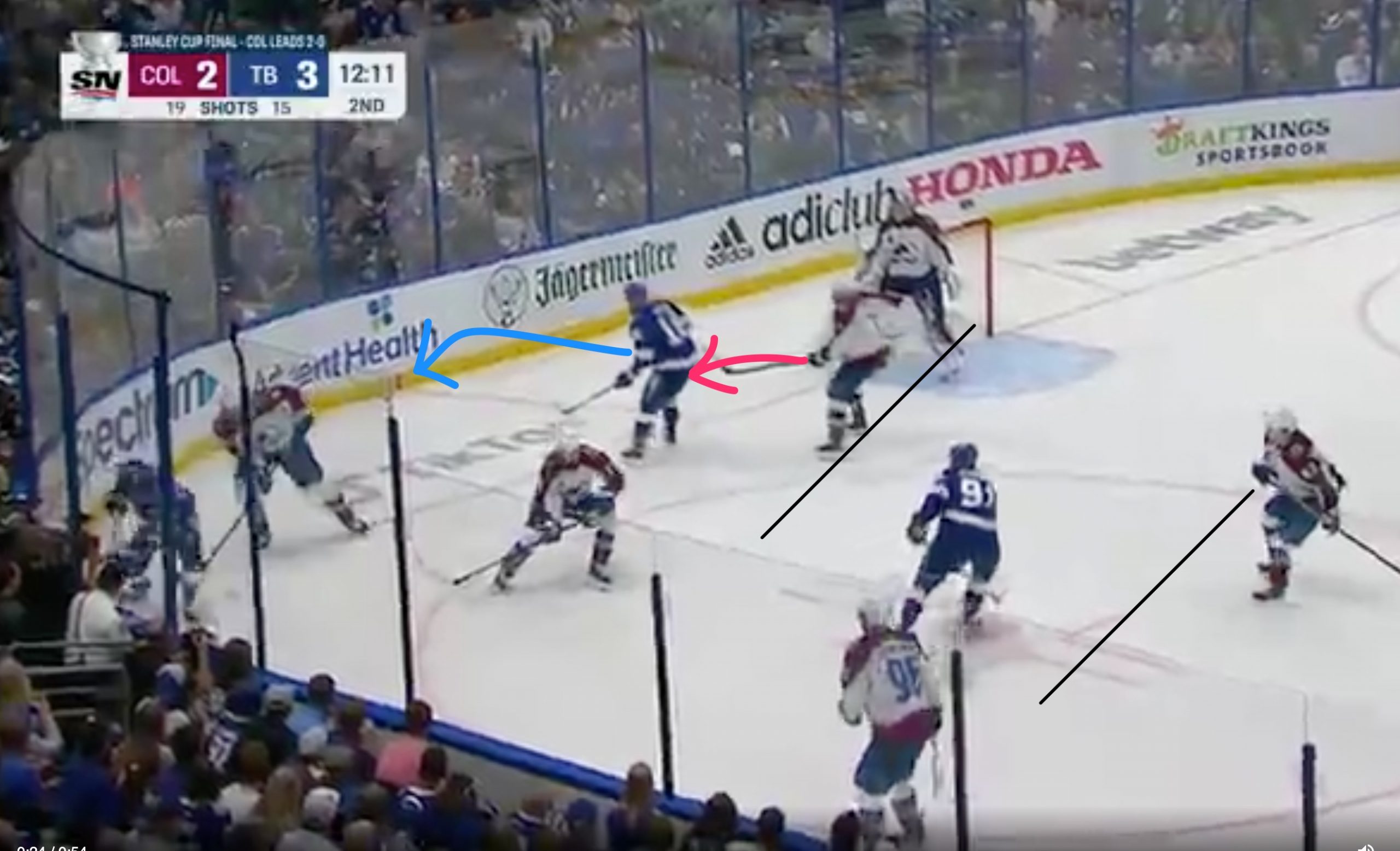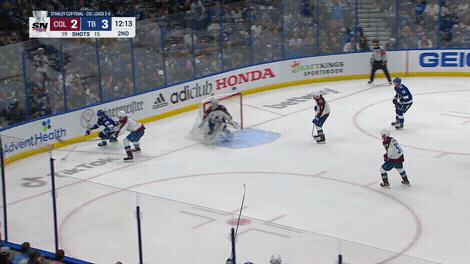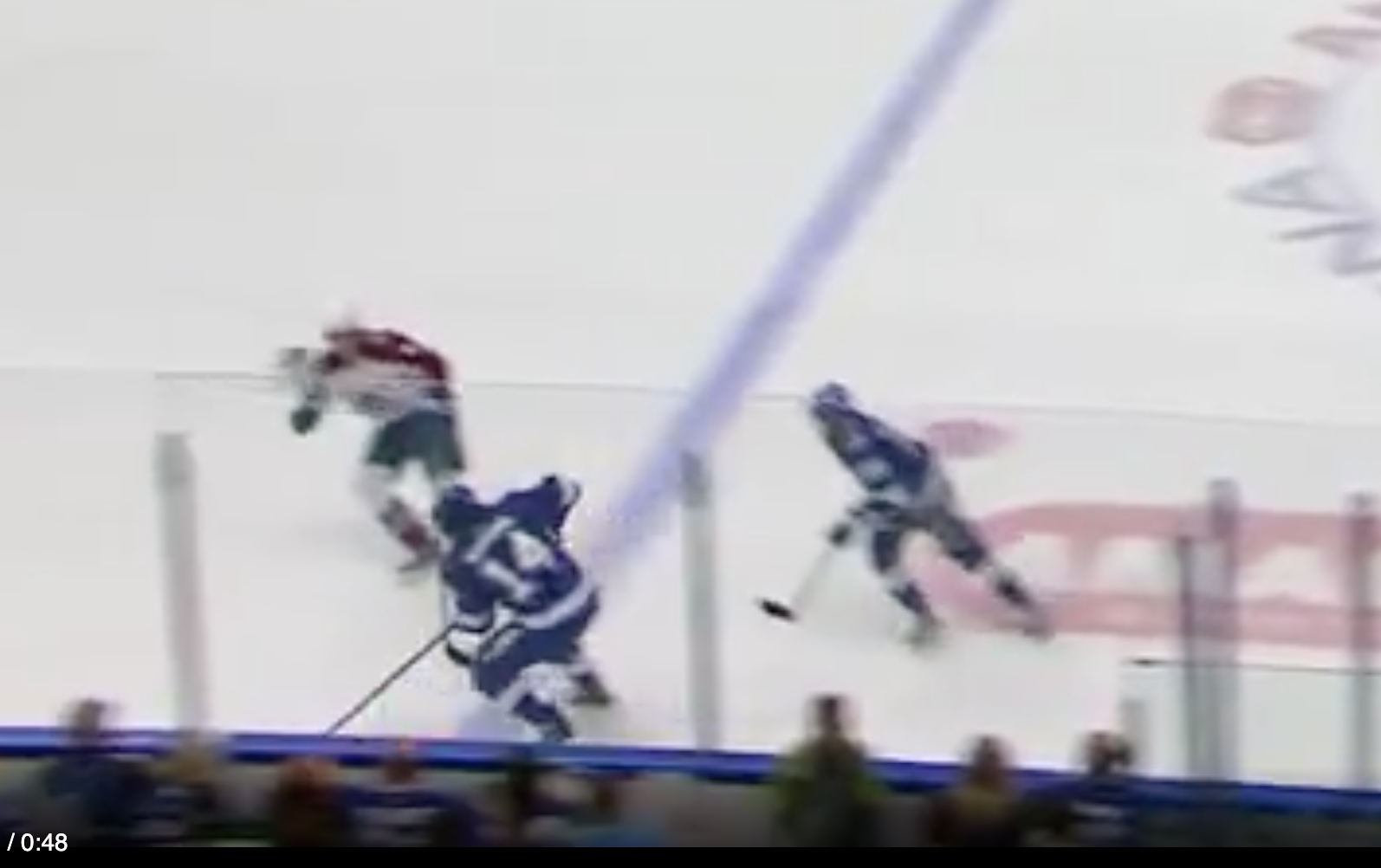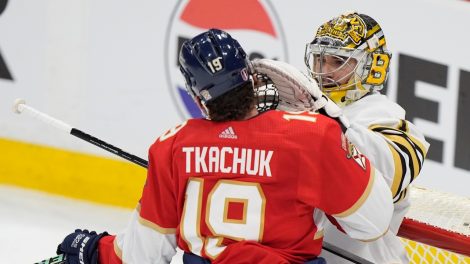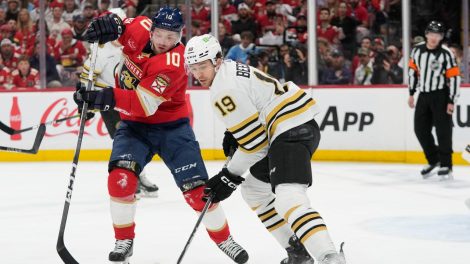After Game 3 of the Eastern Conference Final, I wrote about how creating offence had become a surprising hurdle for Tampa Bay, given how dangerous they’d been in the recent past. In a year where goals per game have been way up, seeing teams in the playoffs score 3.06 goals per game, Tampa have been just … average. Like, literally average, they’ve scored 3.05 goals for per game in the playoffs, eighth of the 16 teams that made playoffs. Brayden Point’s injury and absence have hurt on that front, but his situation is what it is — you still gotta score.
After that article, Tampa scored three in Game 4 (before an empty-netter), three in Game 4, and two in Game 5 … winning every time. Turns out they defend well and have a great goalie. They had scored three and zero times against Colorado heading into Game 3 of the Cup Final, which is to say, they haven’t exactly found themselves on the offensive front.
That is until Game 3 of the Cup Final, where they scored six times, surpassing five goals scored for the first time in a month and a half, dating back to Game 4 of the first round against the Toronto Maple Leafs in early May.
I had lauded Jon Cooper’s adjustments in the previous round here as well, noting that in Games 3 to 5 of every round for the past three seasons there’s a game where it just sort of comes together for the Lightning on the back of what appears to be an adjustment or two. That was Game 3 for the Lightning, in which they took over the scoreboard to the point that the third-period push from Colorado felt like a formality, a bit of a score-effects-related spike.
Something in Tampa’s approach against Colorado changed.
According to Natural Stat Trick, in Game 1 Tampa Bay created eight high-danger scoring chances. In Game 2 they managed just a single one all game, but in Game 3 they created nine in just the first two periods. What changed in their offensive approach was that they prioritized “short support.”
I don’t know if that was an adjustment they consciously made, or if they just brought an offensive game with a little more will than their opponent, but getting inside the Colorado D positioning made all the difference for the Lightning. When a Tampa player had the puck, the next teammate wasn’t hanging around the perimeter of the defence, hoping for an elite pass over or through sticks. They were the next available body past the immediate defender. This offered a “release valve” of sort for Tampa’s forwards, a simple pass they could make to maintain possession while moving towards the opposing net.
On rush plays, using short support may not result in many bam-bam cross-ice beauties, but it keeps the puck in your team’s hands, and allows your team to keep pressing the D to see if they’ll make mistakes. In Game 3, the Avalanche did, and not just their D, but their backchecking forwards, too. Playing on the inside is hard work. You take more contact, more slashes, and often end up putting out a lot of work where there are no rewards. Until there are some on that one surprise play, and that one play might be the difference in a hockey game.
*****
Goal one: Cirelli kicks out to Maroon then slashes through the inside
I’m a little bit obsessed with the offensive principle of taking the puck across the net, or at least trying to. It opens the goalie up, and a save often results in a rebound and chaos around the crease. The goalie feels the play bearing down on them and they’re forced to make a pressure play. Cirelli’s goal was “lucky,” but it’s lucky because he’s working his heart out, taking the puck to the blue paint, and putting himself in a position to have good luck.
That said, none of it happens if he doesn’t drive through the inside of the Avs D as support for Maroon.
He barrels right through the D rather than around them. And Alex Killorn staying nice and close while high is more short support for Maroon, rather than being spread out wide. Killorn also goes through the inside of the next two Avs players to the net:
…And then sniffs around for a rebound, which I liked too. If Cirelli doesn’t score, it might’ve (finally) been his turn.
Goal two: Palat scores after Rantanen gets caught puck watching on the backcheck.
While a lot of this is on the defending, it’s possible because Kucherov doesn’t just blindly skate to the net hoping for Stamkos to make magic. He skates through the inside of the Colorado D, which forces Cale Makar to stay with him…
Which pulls Makar from the front of the net area, so that when Rantanen makes one single oopsie, there’s no one else there to bail him out. Makar has been moved.
Goal three: Nick Paul gets a clean look inside the slot off a Ross Colton pass, while Corey Perry gets in the blue paint.
This one unfolds fairly fast and would take less decision-making on the forward’s part, but I love that Paul heads right into the most dangerous ice off an Avs turnover, but also that Perry cuts to the inside of his guy to the blue paint, and makes life more difficult (as has been his personal mandate all series) for Darcy Kuemper. An aerial view of the their inside positions:
Perry’s always been a committed “inside” player, which is why he’s so effective in the post-season.
Goal four: Kucherov finds Stamkos inside the Avs D, while Palat moves to be short support.
This one garnered a lot of praise (justifiably) for the Kucherov pass to Stamkos, and for Stamkos slashing through the inside of the Avs D and finishing. But it’s Palat who chooses not to spread out — as many players do — and instead comes to Kucherov to give him the easy bump-back option, which pulls the Avs defender just far enough away from the spot where he should hold, so that Stamkos has the room.
Watch the defender in front (Devon Toews) drift with Palat (the camera angle changes, but you can see it happening), who’s content to play within the traffic.
Goal five: As Patrick Maroon gets a stretch pass and enters the zone, Kucherov opts to support him close rather than sprint to the net.
Once again Pat Maroon enters the zone and has options thanks to the positioning of his teammates.
This one may be a little obvious — you don’t want Shaq carrying the ball up the floor while Kobe posts up, so yes, Maroon will drop this for Kucherov every time and they Lightning will be better for it. But you can see the commitment to this short support even as the play develops:
The next Lightning player to enter the picture is on the inside of the Avalanche, too, if the Maroon backhand results in a rebound.
I started this by talking about taking the puck across the net. Again, while Maroon maybe doesn’t do exactly what he intends to do as he cuts in, the chaos at the crease helps the puck find its way in. He put himself in a position to “get lucky.”
It all probably sounds like oversimplification, but the reality is, we often overcomplicate the game on the offensive side of things, particularly in the playoffs. Maybe if the games have been close, and you want to throw a different look at your opponent, you’ll want to spread things out one game. But coming off a 7-0 loss, coming off a string of games where the Bolts couldn’t break a game open with offence, they controlled what they could control — the puck — and found success by owning the inside.
If you’re overwhelmed by your opponent’s speed, the best thing you can do is have that little black thing. For as long as it took to run up the score to 6-2, the Lightning tried a form of offence generation that, even when it doesn’t work, gives them a better chance to keep the puck.


